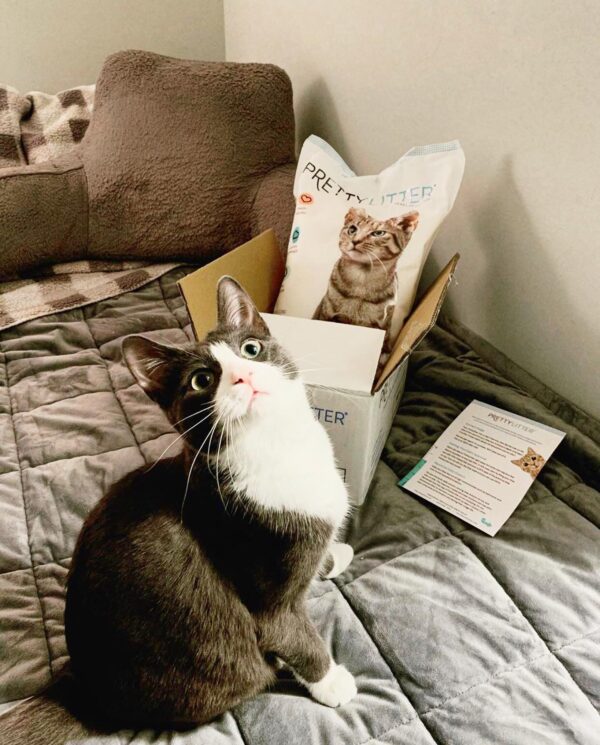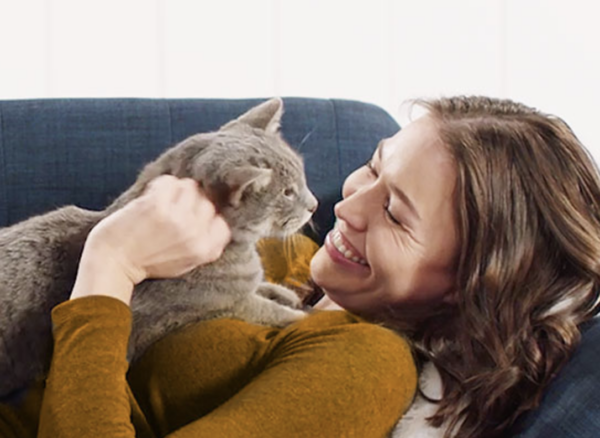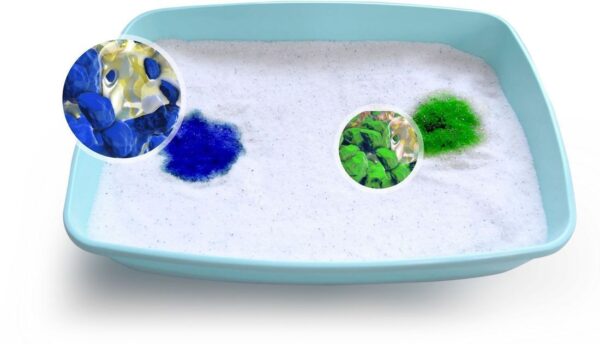As a cat parent, your cat’s health is the number one priority. Unfortunately, cats are notorious for hiding illnesses, so you might not even spot a serious health problem until it’s too late. Luckily, if you know what to look out for and how to reduce the risk of these health problems, keeping your cat safe will be much easier. Our partners at PrettyLitter, creators of the color-changing, health-monitoring kitty litter, have shared this beneficial information with us to help your cat live a long, healthy life.
Common Cat Health Concerns
While cats are great at hiding their pain, there are still plenty of ways to spot their major health concerns. Some of the most common health problems for cats have to do with the litter box, and some of them are similar to conditions humans can get.
Urinary Tract Infections (UTIs)
UTIs are likely the most common health problem for cats. They’re most commonly found in adult female cats, but if a male cat gets one, it can be much more dangerous for them. Bacteria is the main source of a UTI, causing your cat’s urine to have a higher pH, which often leads to crystalized urine. If this is not treated right away, it could cause a urinary blockage for your cat.
If your cat is suffering from a UTI, you might notice them trying to urinate more often. Additionally, they might be spending more time at the litter box, even if they don’t leave any urine behind. You may also notice other signs, such as having blood in their urine, drinking more water than usual, or not eating as much as usual.
Bladder Inflammation and Bladder Stones
These two medical problems have similar symptoms to UTIs. Bladder inflammation, which is also commonly referred to as cystitis, is simply an inflamed bladder with an unknown cause. It’s not as serious as a UTI, but it can still cause lots of discomfort for your cat. Meanwhile, bladder stones are small, rock-like crystals that are found in your cat’s bladder. They can also cause inflammation and blockages.
If your cat has either of these health problems, you may notice them struggling to urinate. Urination might appear painful for them or there could be hints of blood in their urine. You might even notice them trying to use the bathroom more frequently than usual, sometimes even in places outside the litter box.
Metabolic Acidosis and Kidney Tubular Acidosis
Acidosis refers to having too much acid in the body. So, metabolic acidosis is simply when acid in your cat’s body is too high, oftentimes related to chronic kidney disease. It can often be harder to diagnose than other health concerns. Then, kidney tubular acidosis, which is also referred to as renal tubular acidosis, is when your cat’s body is unable to get rid of the acid through urine. This causes extremely high acidity in your cat’s blood and low acidity in their urine.
Some common symptoms for metabolic acidosis include trouble breathing, twitching, heart disturbances, and seizures. For kidney tubular acidosis, possible symptoms include panting, weight loss, dehydration, muscle weakness, blood in urine, and frequent urination. Therefore, it’s best to catch these health problems early on before they worsen.
How to Avoid These Health Problems
Just because your cat can’t directly tell you when something is wrong doesn’t mean you can’t stop major problems from happening. Here are some easy ways to help prevent your cat from getting ill.
Keep the Litter Box Clean
Keeping the litter box clean is the first step to keeping your cat healthy. If you neglect changing the litter and cleaning the box, then bacteria could easily build up inside. It’s important to limit your cat’s interactions with bacteria as much as possible, especially because bacteria in the litter box could lead to UTIs.
Feed Your Cat a Healthy Diet
When it comes to your cat’s food, you need to choose it carefully. Make sure the food is high in protein and free of unnecessary fillers. Sometimes, cheap filler ingredients can greatly impact your cat’s health and cause allergic reactions. Also, wet food and fresh food are usually better than dry food for cats because they provide more moisture, preventing your cat from getting dehydrated.
Lower Stress Factors
Believe it or not, a lot of cat health problems can develop due to stress. By making sure your cat gets plenty of playtime and has lots of places in your home to explore, such as perches and hiding places, they will likely feel more relaxed. If you have more than one cat in your household, make sure each cat has their own litter box and water dish because that can be more comfortable for them as well.
Cats also don’t do well with major changes. If you move or have a kid, try to make the transition as gradual as possible. This is because if you surprise your cat with an unexpected change, they will not be happy.

Visit the Vet Regularly
It’s no surprise that cats should visit the vet regularly, especially since they are good at hiding diseases. Make sure your cat goes in for regular checkups and gets all the necessary vaccinations. Then, if you’ve noticed anything unusual with your cat, that’s the perfect time to ask your vet about it.
Try PrettyLitter
The best way to stop you from worrying about your cat’s health is by trying PrettyLitter! PrettyLitter is an advanced form of crystal litter that can actually monitor your cat’s health. Bacteria can change the pH of your cat’s urine, so when your cat uses the bathroom with PrettyLitter, the litter can help detect whether or not something’s wrong with your cat.
If your cat has any of the major health problems mentioned earlier, PrettyLitter could detect it. The litter simply changes colors to reflect which problems your cat might have. Then, if you see an unusual color in your cat’s litter box, you’ll know to consult your vet right away.
When you use PrettyLitter, here are the colors you might see:
- Blue or dark green: this indicates a high urinary pH, which could signify UTIs or bladder stones.
- Orange: this indicates a low urinary pH, which could mean your cat has metabolic acidosis or kidney tubular acidosis.
- Dark yellow or olive green: this is the color of your typical cat urine.
- Red: this could mean bladder inflammation, bladder stones, or even UTIs.
With PrettyLitter, these colors can show up in your cat’s litter even before you notice any symptoms. That way, you can address the problem before it’s too late. In the long run, this litter’s advanced color-changing technology could save your cat’s life.
Are you ready to switch to a litter that can help you spot health problems easier? If so, switch to PrettyLitter today! We’re proud to have PrettyLitter as our partner, so you can now get 20% off with the code BESTPET20!




